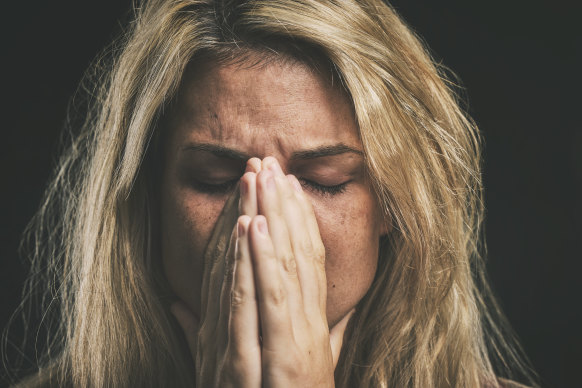This was published 1 year ago
Opinion
Shakes on a plane: Even some pilots are frightened of flying
Jeremy Burfoot
Retired Qantas captainJust between you and me, pilots aren’t the suave, fearless heroes we make out to be. I have some phobias that I’ll admit to: arachnophobia – a fear of spiders, ophidiophobia – a fear of snakes, galeophobia – a fear of sharks and Australiaphobia – which is a fear of all three. Thankfully, I don’t suffer from hippopotomonstrosesquippedaliophobia, which is a fear of long words. It really is.
I don’t have a fear of flying, but up to 40 per cent of passengers have some form of anxiety about air travel, and about 2.5 per cent of the population have been clinically diagnosed with a condition known as aerophobia or aviophobia.

Fear of flying is common and treatable.
People with aerophobia experience intense anxiety when they travel by air or think about flying. Symptoms may include sweating, shaking, nausea, chills, clouded thinking, increased heart rate, shortness of breath, irritability, gastro upset, flushed skin and full-blown panic attacks. For some people, the anxiety starts weeks before a flight, and for others it begins just before boarding the aircraft. Aerophobia costs some people their jobs and even their relationships, so it’s a big issue. It all sounds quite unpleasant to me.
In the early 2000s, some bright spark at Qantas decided it would be a good idea to put a camera in the cockpit and broadcast our passenger announcements to the seat-back screens. They sent out a memo asking for feedback on the idea. I wrote: “Have you seen what I look like at 5am after flying overnight from Los Angeles?” The idea was quietly canned.
I’ve known pilots who are scared of flying. In the industry, they are known as seagulls because you have to throw rocks at them to get them to fly and, even then, they squawk the entire time.
One mate of mine who wasn’t keen on flying said he coped by always taking a taxi to the airport. He said that if you survived that, nothing else could come close to the sheer terror. Fearful passengers usually start their anxiety attacks just before take-off. One pilot brought the aircraft to a halt at the take-off holding point and went back to try and calm the passenger. He told her, “We can go back but before we do, you’ll have to make a speech to your fellow passengers explaining your position and what we are about to do.” She decided to sit down and let the flight proceed.
We’ve all heard the statistics about how much safer you are to take a flight rather than driving your car, and these days it’s usually cheaper and definitely quicker to fly. But for some it isn’t as simple as that. Why do you think passengers sit in airport bars drinking at 9am while they wait for their flights? It’s not because they are thirsty.
So what’s to be done? Fortunately, it’s treatable in all but the worst cases. Cognitive behavioural therapy is usually the first line of treatment. This can involve controlled exposure, whether that’s through actual flying, simulation or virtual reality. CBT tends to give a slow desensitisation to the causes of the fear. Individual hypnotherapy can help in some instances as well. Medication is used in some cases to reduce anxiety. Doctors may prescribe anti-anxiety medicines such as Xanax or Valium, but this is generally a short-term solution, as is alcohol.
Fear of flying courses are available online or in live group sessions. Customers may get to meet pilots, talk about airline safety and even board a plane. They will also get taught coping techniques. The things that tend to scare people the most are take-offs, turbulence and weather.
Educating customers about these issues can help reduce anxiety. Convincing them that their fear is based on false assumptions is very important.
One fear of flying company even offers an app which allows fearful flyers to contact a pilot and chat live about their anxieties. The pilots are retired or current and are trained to use the app for this purpose. These chats can even be done while flying if Wi-Fi is available, and this process shows good success in relieving anxiety.
In the future, aerophobia might become less of a problem. In an ideal world, you would turn up for your flight, get put to sleep, and be loaded into a capsule with a hydrating drip in your arm. Then you’d be woken at the other end and sent off with a couple of sandwiches and a coffee, feeling fully relaxed. What’s not to like about that?
Jeremy Burfoot is a retired Qantas A380 captain
The Opinion newsletter is a weekly wrap of views that will challenge, champion and inform your own. Sign up here.